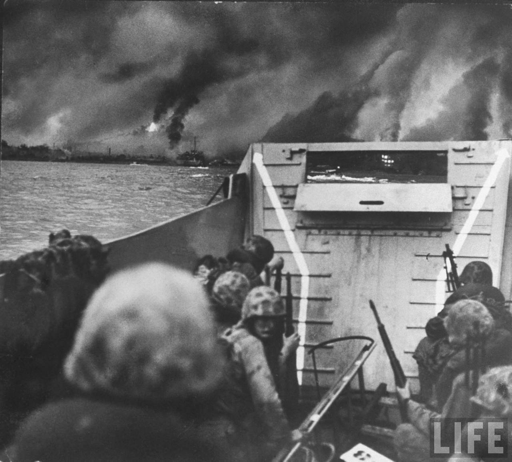|
|
January 30th, 2012
The year 2012 is shaping up to be the year when five
decades of economic, energy, monetary, and foreign
policy errors by eight successive US administrations
finally catch up with us. The rise and collapse of two
asset bubbles in ten years has left the US economy
structurally weakened and government finances in
shambles. As dwindling global oil supplies shuffle
economic and political power in the Middle East, the
shrinking contribution of the US and Europe to global
economic output is shifting economic and political power
West to East. The global political economy is reorganizing
around the world's sources of oil and savings. Eastern and Middle Eastern powers are pulled together and pushed away from Western power and influence.
After decades of accumulation of risk to the steady-state political economy formed in the decades after WWII and reformed after the Cold War, in 2012 we see the potential for step function change that puts it all, or nearly all, up for grabs. On an a multi-millennial historical time line, it may happen in blink of an eye.
Call it the Year of the Jump Ball. Like a jump ball, the win goes to the quick and the strong. Who will it be and what does it mean for us as investors?America's Five Critical Risk Factors
The US made five manageable and recoverable public policy errors in the early 1970s and 1980s. Then, as each administration failed to confront them, these once manageable and recoverable errors grew and metastasized into America's Five Critical Risk Factors. One or more of these factors may culminate in crisis in 2012 with consequences that are as difficult to predict as the timing. The potential consequences can be traced back to the original source of each of the five risks. Risk Factor Cause #1: Unilaterally abandoning the international gold standard to force the world onto the US Treasury dollar standard in 1971Economist Robert Triffin and French president Charles de Gaulle warned of the consequences of currency reserve accumulation by US trade partners and of the US "going into debt for free" if global monetary system based on the currency and debt of a single sovereign nation -- the US -- persisted. The imbalances predicted by the Triffin Dilemma and the threats they pose to the international monetary system (IMS) and the global economy became apparent decades later, in the 1990s, yet Prisoner's Dilemma economics motivated all major parties in the system to perpetuate it. The cost of reform will fall largely on the monetary system's main beneficiary, the United States. Major parties to the system are in no position to press the US for reform at US expense because they depend on the US for either export demand -- dependence on the "over-consumption" growth model that Triffin warned about -- and thus domestic economic security, or military security, or both. Paradoxically, the economies of US its trade partners have over time become dependent on the global imbalances that Triffin predicted. ( read more...). |
Next we survey a panorama of potential outcomes of Five Critical Risk Factors for 2012. The results will be difficult to distinguish from randomness. In Part II we nonetheless identify scenarios that are more likely than others. 2012 Forecast: A strife of FIRE Economy interests masquerading as a contest of principlesWith January arrives a smorgasbord of annual forecasts on the economy and markets penned by every pro with money under management. Each portrays economic developments as precipitous for the asset class they manage: inflation and currency depreciation for the hard assets guys, deflation and QE for the bond guys, currency volatility for the long-short currency guys, and the perennial promise by the long equity guys on a return to robust growth and multi-year bull market. Never mind that the bull market in equities has failed to materialize after more than a decade of similar calls. Denial springs eternal. Among the prognosticators, hedge funds and family practices tend to most truly report the figures they spy in the crystal ball without passing them through an asset class based bias filter. Although these managers have greater editorial flexibility than their mono-asset class management brethren they are still bound by the mindset of the clients they have attracted with a storyline of ideologically oriented analysis, an editorial style of financial analysis that came into fashion in the wake of the American Financial Crisis (AFC) that caught so many believers in Wall Street's game flat footed. The AFC caught most funds flat-footed. Who to blame for missing an event that loomed large enough to inspire us to call in December 2007 for a 40% decline in the stock indexes in 2008? How to deflect the ire of clients for neglecting to point them to gold and lowly Treasury bonds, two seemingly antithetical assets that live on opposite ends of the ideological spectrum, one a short government position and the other long, while perfectly balancing the bi-polar political economy dominated by FIRE interests and failed monetary policy? Funds embellished client letters thereafter with heavy doses of contempt for panoply of miscreants, from the Fed to the ratings agencies to bankers as a group, one and all accused of causing the Who-Could-Have-Known? cheap oil and cheap credit bust debacle ( More $ Subscription)... |
|
* Why did stocks markets plummet
more last week than during any
Thanksgiving week since 1942?
* Why are oil prices rising as the
global economy slows?
gold in Q3 than any period since the collapse of Bretton Woods in 1971? Last week of the Bureau of Economic Analysis released revised U.S. GDP numbers for 2011. They reveal a U.S. economy destined for a new recession before the economy recovers from the last one, a mid-gap recession in iTulip terminology. That hasn't happened since 1938. Yet price inflation is rising across the board, even in goods like apparel and autos. Inflation indexes for these items have remained flat or declined since the early 1990s due to increased mechanization of production and foreign competition with low wage rate countries. Now they are rising as a direct result of the Fed's failed Print and Pray policies aimed at reflating home prices and the Treasury's unofficial Weak Dollar policy that creates cost-push inflation via rising import prices. The price of a car in the U.S. has gone up more over the past two quarters than at any time since the early 1970s, even though units sales of autos, hammered by the recession, remains depressed at early 1980s unit sales volumes. As the prices of goods and services rise in a weak labor market, real wages fall. The broadest index of wage costs printed a -1.5% real decline in October, as the U.S. economy remains stubbornly stuck in an output gap of 7% of GDP where it landed in early 2009. Two and a half years and trillions of stimulus and bailouts and QEs later, the gap is still 7%. We got nowhere. The American Financial Crisis of 2008 that led to The Great Recession resulted from ( More ...) |
Essential Trends - Part II-B: War Economy Theory
- by Eric Janszen 
November 30th, 2011
* Inside an engineered stagflation
* Post-credit bubble, pre-war
economy
* Sectors of the stock market
speak
*U.S. Marines landing at Inchon as
battle rages during Korean Civil
War.
Location: Inchon, Korea
Date taken: 1950
Photographer: Hank Walker
Life Images
(This article is a continuation of
Essential Trends - Part I-B: Gold in an Era of Global Monetary System Regime Change) Underlying the combination of depressed output and rising inflation is an increase in import prices resulting from two years of Print and Pray policy. We're accustomed to seeing inflation in insurance, health care, education and other non-traded services that have been inflated via the sector-specific credit-money of the rent seeking institutions of the FIRE Economy. In 2006 we created an inflation chart that shows how we experience inflation int he U.S. The price of traded durable goods, such as autos, have remained flat or even declined due to a combination of increased mechanization of manufacturing and low wage manufacturing in Asia and Latin America. (By non-traded we mean that goods and services purchased domestically that are not subject to foreign competition.) The price of non-durable goods, such as clothing, declined while the prices of non-traded services, especially health care, insurance, and housing, continued to climb at double-digit annual rates. The combination of the two, deflation in the prices of traded goods and inflation in non-traded services and some goods (e.g., housing), produces the benign CPI number that the BEA has printed since 1990. Starting in 2001, oil prices pushed up the price of all energy-related items, such as food, a process interrupted by the crash of 2008. However, energy and food prices are left out of the CPI as being "too volatile" to include. I argue that 10 years of energy price increases does not constitute a short-term trend. At some point persistent cost-push inflation from high energy prices will have to be figured into the CPI.. (More $ Subscription...)
|
 |
|
|
|
|
|
|

"The Postcatastrophe Economy: Rebuilding America And Avoiding The Next Bubble"- [Hardcover] Portfolio, September 2nd,2010
Advance praise:
"Eric Janszen has written a powerful and important book about how we can build an American economy in which 'finance once again serves the productive economy instead of rules it.' He describes the job-creating industries of the next ten years and what we have to do to make them thrive."
-Former U.S. Senator Bill Bradley
"We need to know where we will be when we get out of this mess, and the Fed's combination of nostalgia, raw hope, and guesswork does not give much guidance. Eric Janszen, seeking scope and depth, contributes significantly to the next, necessary debate." -Martin Mayer, Brookings Institute Guest Scholar and author of The Fed and the Markets
|
|
Quote for this Market: "It's almost worth the Great Depression to learn how little our big men know."
- Will Rogers


March 2008: Harper's Magazine cover article "The Next Bubble" by Eric Janszen now available here. |
|
Money Matters Finance Best of 2006
 YahooFinance GoogleFinance Prosper MSN Money Investopedia Motley Fool iTulip |
|